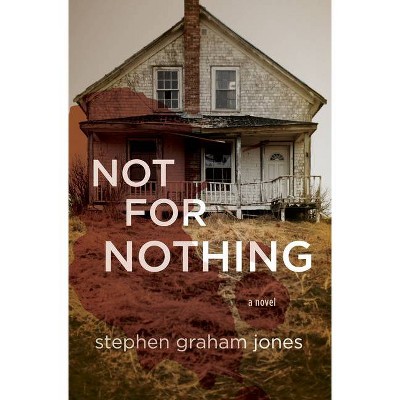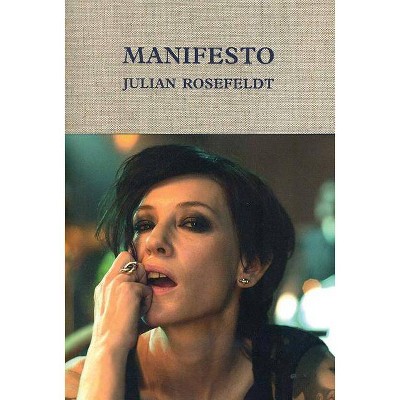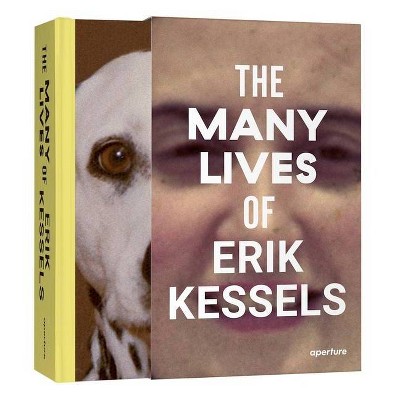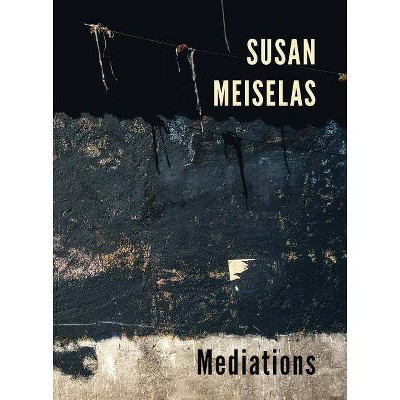Not Nothing - by Elizabeth Zuba (Paperback)

Similar Products
Products of same category from the store
AllProduct info
<p/><br></br><p><b> About the Book </b></p></br></br>"Ray Johnson, considered the progenitor of Correspondence art, blurred the boundaries between life and art, authorship and intimacy. The defining nature of his work were his letters (often both visual and textual in character), intended to be received, replied to (altered and embellished) and read, again and again. This lovingly curated collection of more than 200 mostly previously unpublished writings - including selected letters, minutes for "New York Correspondence School" meetings, hand-written notes and other writings - opens a new view into the whirling flux of Johnson's art, highlighting his keen sense of play as well as his attuned sensitivity to both language and the shifting nature of meaning. Cumulatively, the writings reveal not only how he created relationships, glyphs and puzzles by connecting words, phrases, people and ideas, but also something about the elusive Johnson himself"--From the publisher.<p/><br></br><p><b> Book Synopsis </b></p></br></br>Ray Johnson (1927-1995) blurred the boundaries of life and art, of authorship and intimacy. Correspondence is the defining character of all of Johnson's work, particularly his mail art. Intended to be read, to be received, to be corresponded with, his letters (usually both image and textual in character) were folded and delivered to an individual reader, to be opened and read, again and again. Johnson's correspondence includes letter to friends William S. Wilson, Dick Higgins, Richard Lippold, Toby Spiselman, Joseph Cornell, Yoko Ono, Nam June Paik, Robert Motherwell, Eleanor Antin, Germaine Green, Lynda Benglis, Arakawa and Madeline Gins, Christo, Billy Name, Jim Rosenquist and Albert M. Fine, among many others. The subjects of his correspondence ranged from the New York avant-garde (Cage, Johns, de Kooning, Duchamp) to filmmakers such as John Waters, philosophers such as Jacques Derrida and writers such as Gertrude Stein and Marianne Moore. This collection of more than 200 selected letters and writings--most of which are previously unpublished--opens a new view into the sprawling, multiplicitous nature of Johnson's art, revealing not only how he created relationships, glyphs and puzzles in connecting words, phrases, people and ideas, but also something about the elusive Johnson himself. In a 1995 article in <i>The New York Times</i>, Roberta Smith wrote: Make room for Ray Johnson, whose place in history has been only vaguely defined. Johnson's beguiling, challenging art has an exquisite clarity and emotional intensity that makes it much more than simply a remarkable mirror of its time, although it is that, too.<p/><br></br><p><b> Review Quotes </b></p></br></br><br>For, while the increased availability of Johnson's letters, notes, and statements subtilizes our understanding of this legendarily well-connected yet enigmatic artist, his flattened logorrheia is also just fun to read.--Francis Richard "Hyperallergic"<br><br>Full of seemingly mad illustrations and poetically esoteric lists, the entries in Not Nothing almost explicitly demand artists to pick up where Johnson left off and continue the conversation.--Mark Guiducci "Vogue.com"<br><br>Not Nothing is a display of ashes. It is made for looking but, because of its reformulation of the social into a tangible maze, I prefer to torch and snort it. An experimental privacy manifesto invading my nasal passages. The documents it contains corrode things out of things--items more perverse than the baloney out of the sandwich, chomping out the meat upon which our artistic economy sustains itself. A cauterized performance of the direct mail campaign that weighs against our rabidly luxe social field. Corresponding fishing hole gradually dried up. No more nose bleeds.--Trisha Low "BOMB Magazine"<br><br>Perhaps this book's greatest accomplishment is that it not only clues a reader into the myriad thought processes of an artist like Ray Johnson, but--by way of correspondences--sheds light upon the mindset and artistic leanings of an entire generation of artists and thinkers.--John Gibbs "The Improbable"<br><br>The artist Ray Johnson (1927-1995) is best known for his collages, dense with images pulled from pop culture and personal obsessions. But his most radical work was his New York Correspondence School, devoted to the circulation of mail art - in the form of letters, postcards and drawings - through the postal system. Because much of the work in this epistolary mode isn't visual art in the usual sense, we don't see it much in exhibitions, and Siglio has come to the rescue with an extraordinary volume of Johnson's letter-essay-poem collages. Here he is at his witty, scary artist-poet best, and there is no one like him.--Holland Cotter "The New York Times"<br><br>The book crackles with intellectual energy, with enough drawings and mini-collages embedded in its reproduced texts to hold even a nonreader's attention. Most importantly, it fills out the picture of what and who Johnson was: a brilliant, uncontainable polymath, an artist-poet, the genuine item.--Holland Cotter "The New York Times Arts & Leisure"<br><br>The writings also convey the colorful, staccato delivery that characterized Johnson's unique manner of speaking that was so much a part of his elusive persona.--David Ebony "Art in America"<br><br>When Ray Johnson famously committed suicide by swimming out to sea in 1995, he left behind a conflicted legacy. Johnson was a pioneer of Pop, Conceptual and Mail art, yet the artist refuted all of these terms. He was an increasingly reclusive figure who, to paraphrase writer William S. Wilson, "made art that was not about social comment but of sociability," exploring new interfaces between his work and its audiences (and collaborators). His methods were temporal as much as they were spatial -- lacking finality, Johnson's practice embraced contingency and process over a finished product. These strategies resist the exhibition form, and one can see how the intimacy and transportability of the book might offer the perfect platform for his often diaristic work. This year Siglio Press has brought together over 200 selected letters and writings -- most of them unpublished -- for Not Nothing: Selected Writings by Ray Johnson, 1954-1994 and re-published The Paper Snake by Ray Johnson, an artist's book from 1965. Designed by Dick Higgins and envisaged as an experimental solution to compiling and exhibiting Johnson's works, The Paper Snake offers a selection of elliptical poetry, drawings, collages and rubbings. With introductory essays, and designed with an attuned sensitivity to the original material, the two new publications will introduce a new generation to the restless work of Ray Johnson.--George Vasey "Kaleidescope Magazine"<br>
Price History
Cheapest price in the interval: 34.49 on November 8, 2021
Most expensive price in the interval: 34.49 on December 20, 2021
Price Archive shows prices from various stores, lets you see history and find the cheapest. There is no actual sale on the website. For all support, inquiry and suggestion messages communication@pricearchive.us




















